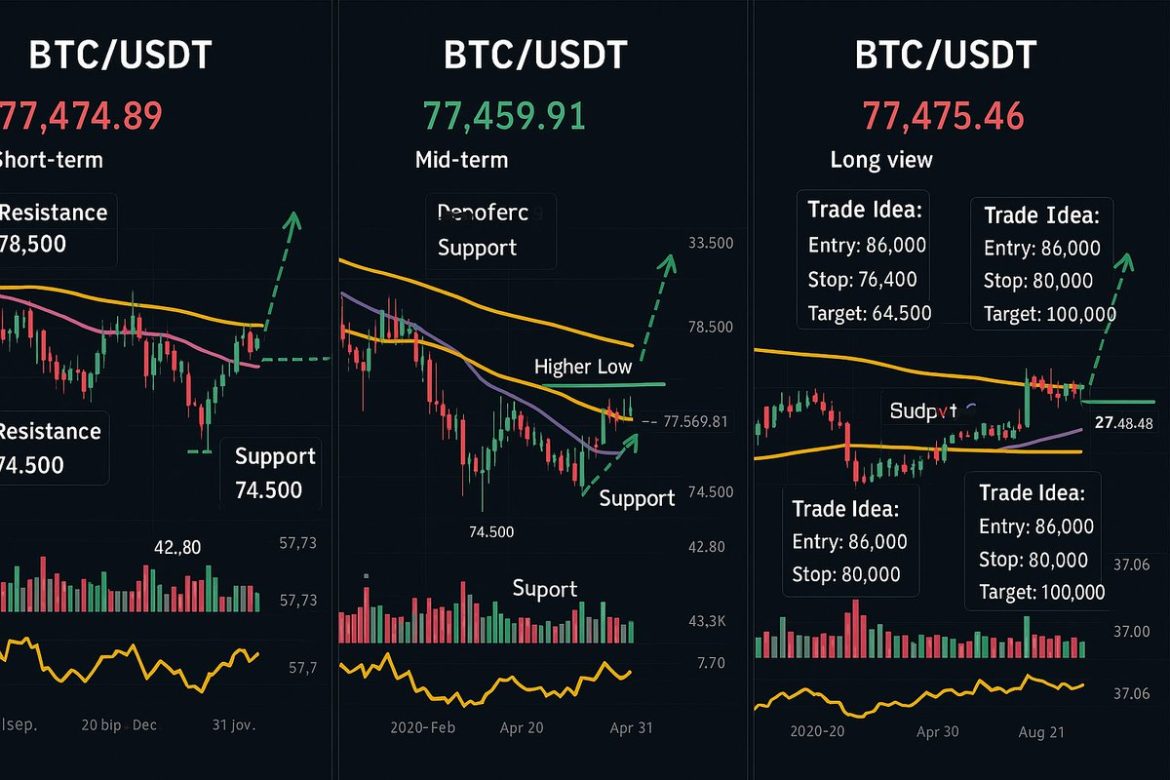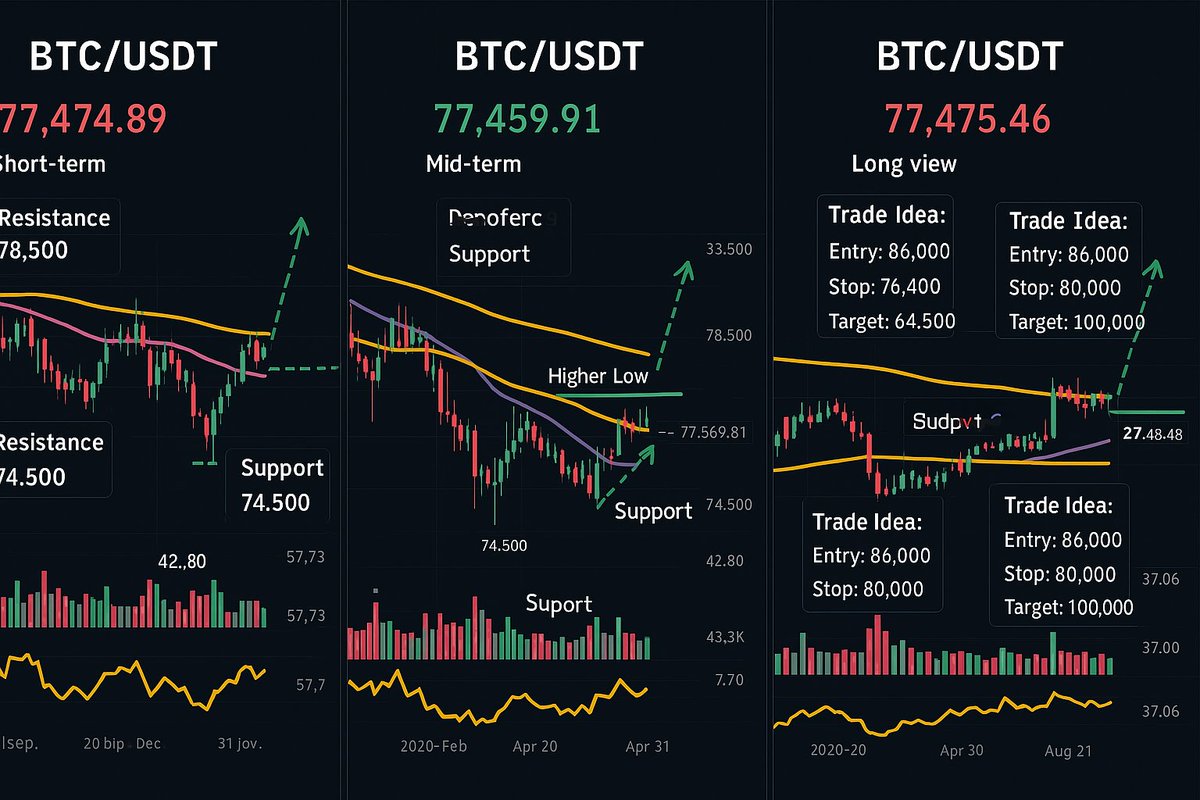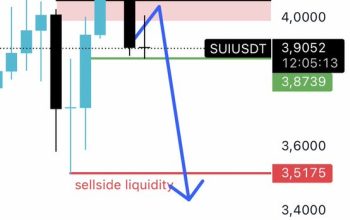Introduction
Imagine a world where money is not just a piece of paper or a number in a bank account, but a digital entity that can be sent across the globe in seconds. This is the world of cryptocurrency, a phenomenon that has captured the imagination of investors, technologists, and everyday users. As we delve into 2025, the cryptocurrency landscape is more vibrant and dynamic than ever, with new trends, technologies, and market dynamics shaping the future of digital currencies. Let’s embark on a journey to explore the current state of the cryptocurrency market, focusing on key trends, technological advancements, and market sentiments.
The Current State of Cryptocurrency
Market Sentiments and Trends
The cryptocurrency market is renowned for its volatility, and 2025 is no exception. Recent analyses indicate that Bitcoin (BTC) is fluctuating between $65,000 and $68,000 as the market searches for fair value[10]. This price range reflects a period of consolidation, where investors are cautiously optimistic about the future. The market sentiment is influenced by various factors, including regulatory developments, technological innovations, and global economic conditions.
Investors are keeping a close eye on regulatory changes, as governments around the world grapple with how to manage and regulate digital currencies. Technological advancements, such as the Lightning Network for Bitcoin, are also playing a significant role in shaping market sentiments. These innovations aim to address scalability and efficiency issues, making cryptocurrencies more practical for everyday use.
Technological Innovations
One of the most exciting developments in the cryptocurrency space is the emergence of lightweight blockchains. Mina Protocol, often referred to as the “lightest blockchain in the world,” is a prime example[2]. This technology aims to address the scalability issues that have plagued traditional blockchains, making it more accessible and efficient for everyday use. Such innovations are crucial for the widespread adoption of cryptocurrencies, as they enhance performance and reduce barriers to entry.
Lightweight blockchains like Mina Protocol use a unique approach where the blockchain itself remains small and constant in size, regardless of the number of transactions. This is achieved through a technique called zk-SNARKs (Zero-Knowledge Succinct Non-Interactive Arguments of Knowledge), which allows for efficient verification of transactions without revealing the underlying data. This not only improves scalability but also enhances privacy and security.
Community-Driven Cryptocurrencies
Memecoin is another fascinating trend in the cryptocurrency world. Originating from popular internet culture, Memecoin leverages the power of memes and social trends to drive community engagement and value[3]. This community-driven approach has proven successful in creating a loyal following and fostering a sense of belonging among users. Memecoin’s success highlights the importance of community engagement and the potential of viral marketing in the cryptocurrency space.
The rise of Memecoin can be attributed to its ability to tap into the collective consciousness of the internet. Memes, by their nature, are shareable and relatable, making them an effective tool for building a community. This community-driven approach not only drives adoption but also creates a sense of ownership and investment among users. The viral nature of memes ensures that the cryptocurrency gains traction quickly, often leading to rapid increases in value.
Key Players and Their Strategies
Bitcoin: The Gold Standard
Bitcoin remains the gold standard of cryptocurrencies, with a market capitalization that dwarfs its competitors. Despite its dominance, Bitcoin faces challenges such as scalability and energy consumption. However, ongoing developments in the Bitcoin network, such as the Lightning Network, aim to address these issues by enabling faster and more efficient transactions.
The Lightning Network is a second-layer solution built on top of the Bitcoin blockchain. It allows for off-chain transactions, significantly reducing the time and cost associated with transferring Bitcoin. This innovation is crucial for Bitcoin’s scalability, as it enables the network to handle a larger volume of transactions without compromising on security or decentralization.
Litecoin: The Silver to Bitcoin’s Gold
Litecoin, created by Charlie Lee in 2011, positions itself as a “lighter” version of Bitcoin[6]. With faster transaction times and lower fees, Litecoin has carved out a niche for itself in the cryptocurrency market. Its open-source nature and peer-to-peer architecture make it an attractive option for users seeking a more agile and cost-effective alternative to Bitcoin.
Litecoin’s success can be attributed to its focus on efficiency and accessibility. By offering faster transaction times and lower fees, Litecoin appeals to users who need a more practical and affordable option for everyday transactions. Its open-source nature also fosters a community of developers who continuously work on improving the network, ensuring that it remains relevant and competitive.
Emerging Players
Emerging cryptocurrencies like Mina Protocol and Memecoin are pushing the boundaries of what is possible in the digital currency space. Mina Protocol’s focus on creating an extremely lightweight blockchain is a testament to the ongoing innovation in the sector[2]. Meanwhile, Memecoin’s community-driven approach showcases the power of social trends and viral marketing in driving adoption and value[3].
These emerging players are not just challenging the status quo but also paving the way for new possibilities. Mina Protocol’s lightweight blockchain, for example, has the potential to revolutionize the way we think about scalability and efficiency in blockchain technology. Similarly, Memecoin’s community-driven approach highlights the importance of social engagement and viral marketing in the cryptocurrency space.
The Future of Cryptocurrency
Regulatory Landscape
The regulatory environment plays a crucial role in shaping the future of cryptocurrencies. As governments and financial institutions grapple with the implications of digital currencies, regulatory frameworks are evolving. While some countries are embracing cryptocurrencies, others are imposing stricter regulations. This regulatory uncertainty can impact market sentiments and investor confidence, making it a critical factor to monitor.
Regulatory developments can have a significant impact on the cryptocurrency market. For instance, positive regulatory changes can lead to increased adoption and investment, while stricter regulations can result in market volatility and uncertainty. It is essential for investors and stakeholders to stay informed about regulatory developments and adapt their strategies accordingly.
Technological Advancements
Technological advancements continue to drive the cryptocurrency market forward. Innovations such as blockchain scalability solutions, decentralized finance (DeFi), and non-fungible tokens (NFTs) are transforming the way we think about digital assets. These technologies have the potential to revolutionize various industries, from finance to art and entertainment, by providing new ways to create, exchange, and manage value.
DeFi, for example, is a rapidly growing sector within the cryptocurrency space. It aims to create a decentralized financial system that is open, transparent, and accessible to everyone. DeFi platforms offer a range of financial services, including lending, borrowing, and trading, without the need for traditional intermediaries. This not only reduces costs but also increases accessibility and inclusivity.
Market Dynamics
The cryptocurrency market is influenced by a multitude of factors, including global economic conditions, technological advancements, and regulatory developments. As we move forward, it is essential to stay informed about these dynamics to make informed investment decisions. The market’s volatility presents both opportunities and risks, making it crucial for investors to conduct thorough research and stay updated on the latest trends and insights.
Understanding market dynamics is key to navigating the cryptocurrency landscape. For instance, global economic conditions can impact market sentiments and investment decisions. Technological advancements, such as new blockchain solutions or DeFi platforms, can create new opportunities for growth and innovation. Regulatory developments, on the other hand, can shape the legal and operational environment for cryptocurrencies, affecting their adoption and use.
Conclusion: Embracing the Future
The cryptocurrency market is a dynamic and ever-evolving landscape, shaped by technological innovations, regulatory developments, and market sentiments. As we navigate through 2025, it is clear that the future of digital currencies holds immense potential. From lightweight blockchains to community-driven cryptocurrencies, the innovations in this space are paving the way for a more inclusive and efficient financial system. Embracing these changes and staying informed will be key to thriving in the exciting world of cryptocurrencies.
The future of cryptocurrency is bright, but it is also uncertain. As we continue to explore and innovate, it is essential to remain adaptable and informed. By staying updated on the latest trends, technologies, and regulatory developments, we can navigate the cryptocurrency landscape with confidence and seize the opportunities that lie ahead.
—





